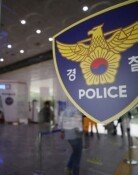Repatriation of Seeds
Reclaiming Lost Seedlings-
Two countries across the Pacific have agreed to return genetic resources native to Korea to their original habitat. Officials from the Rural Development Administration of Korea (RDA) and the U.S. Agricultural Research Service (ARS) got together at the RDA building in Suwon yesterday to celebrate the decision.
A total of 1,679 kinds of various seeds are to be returned, including diverse types of beans, garlic and green onions. 280 of them have already returned, and delivery of the rest will be completed by the end of this year.
To get the deal done, the South Korean government made a huge effort to persuade its American counterpart.
The RDA, for example, entered into an MOU with the ARS in 2002. In addition, the two organizations executed an agreement last year on exchanges of staff members, returns of genetic resources, and joint research projects.
In February this year, the U.S. agency confirmed that it retained 6,000 seeds of Korean origin. In response, the RDA requested that all items not retained by it be repatriated to Korea.
RDA researcher Kim Dae-il briefed the press on the process, saying, The U.S. hesitated at first. We repeatedly told them we need them to further the technological cooperation between our two countries. We finally got our point across.
Continuing Repatriation Efforts with Japan and Other Countries-
Scholars believe that the world powers like the Untied States and Russia began to export the Korean seeds starting near the end of the Joseon Dynasty. The exodus hit its pinnacle during the Japanese occupation of Korea. Even after liberation, American and other foreign scholars sorted out thousands of the seeds and took them to their countries.
These stolen genetic resources have been put to use for creation of huge wealth through genetic manipulation and researches.
For example, experts trace the Miss Kim lilac, a flower now famous in the United States, to the lilac bush native to Mt. Bukhan in Seoul. Further, the Korean fir, one of the most favored materials for Christmas trees in the Untied States and Europe, as the name indicates, is native to Korea. It was first taken out of Korea to Europe in the early 20th century.
The RDA predicts, This case will serve as a wonderful precedent. We can make the same claims with Japan and other countries. The National Assembly of South Korea enacted a law last month that penalizes any act or attempt to export South Koreas genetic resources without authorization.
jarrett@donga.com







